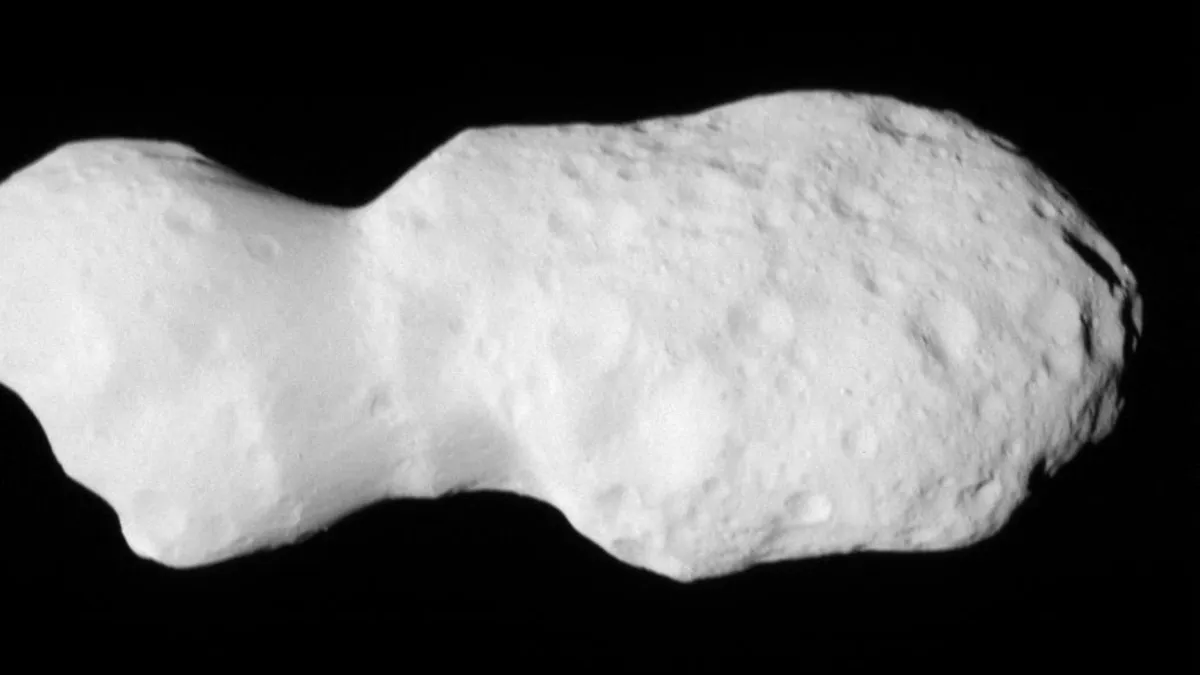
NASA's Lucy spacecraft has achieved a significant milestone by capturing its first high-resolution images of an asteroid, unveiling the unique features of a 150-million-year-old space rock named Donaldjohanson. This fascinating asteroid formed from the collision of two smaller celestial objects, resulting in its peculiar shape. Resembling a misshapen peanut, Donaldjohanson is narrow in the middle with two lobes on either side, one of which is larger than the other.
On April 20, Lucy flew within an astonishing 600 miles (960 kilometers)—roughly the width of the state of Montana—of the asteroid, capturing the first detailed images of this intriguing space rock. Researchers believe that studying Donaldjohanson will provide valuable insights into the formation of planets in our solar system.
Hal Levison, the principal investigator for Lucy at the Southwest Research Institute in Colorado, stated in a NASA release that Donaldjohanson exhibits strikingly complicated geology. He emphasized that as researchers analyze the asteroid's complex structures in detail, these will reveal vital information about the building blocks and collisional processes that contributed to the formation of the planets in our solar system.
The Lucy mission, which launched in 2021, is set on a journey to explore ancient asteroids orbiting the sun within the main asteroid belt, located approximately 445 million miles (715 million kilometers) from Earth. The primary targets of Lucy are the Trojan asteroids, which are billions of years older than Donaldjohanson and are divided into two groups that orbit alongside Jupiter. These Trojan asteroids are believed to be composed of the same ancient materials that formed giant planets like Jupiter, Neptune, and Saturn, thus offering a unique opportunity for scientists to understand the origins of our solar system.
Donaldjohanson is classified as a medium-sized asteroid within the main asteroid belt, situated between Mars and Jupiter. It orbits the sun at a distance that ranges from approximately 180 million to 260 million miles (290 million to 420 million kilometers), according to Space Reference. Researchers estimate that Donaldjohanson measures about 5 miles (8 kilometers) in length and 2 miles (3.5 kilometers) in width at its broadest point, making it relatively small compared to the Trojan asteroids that Lucy aims to study. For instance, Lucy's first Trojan target, Eurybates, is estimated to be around 40 miles (64 kilometers) wide.
Interestingly, Donaldjohanson is named after the renowned American paleoanthropologist Donald Johanson, who discovered the Australopithecus fossil named Lucy in 1974 alongside his graduate student Tom Gray. NASA chose to name the Lucy mission after this fossil because, just as it provided critical insights into human evolution, researchers hope that the Lucy mission will illuminate the origins of planets.
Using the Lucy Long-Range Reconnaissance Imager, the spacecraft captured new images of Donaldjohanson. However, not all of the asteroid is visible in these images, as Donaldjohanson exceeds the scope of Lucy's field of view. As more data is transmitted back to Earth, researchers anticipate gaining a comprehensive understanding of the asteroid's full shape. Earlier this year, Lucy conducted a system test with a flyby of the asteroid Dinkinesh in 2023. Nevertheless, NASA officials described the recent approach to Donaldjohanson as a crucial full dress rehearsal in preparation for the spacecraft's upcoming visit to its first Trojan asteroid in 2027.